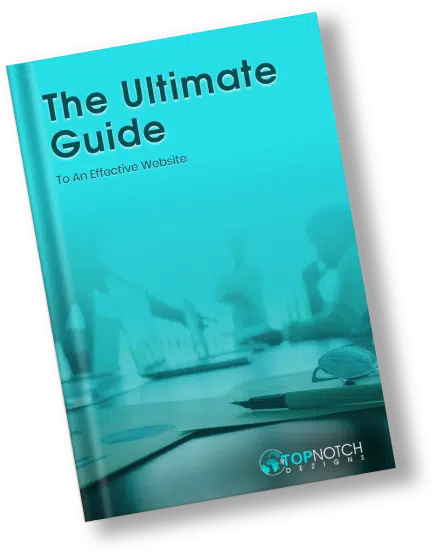Just how long ago you launched your WordPress website has an effect on your visitors’ user experience now. After all, hardly anybody favors old school over functionality in the online world. Know that the digital landscape continues to evolve at a rapid pace, and tools that worked well a few years ago may well be obsolete now. For example, owing to the many WordPress updates, this content management system (CMS) has come a long way since its launch in 2003.
If you want to keep up with your customers’ preferences and wish to make the most of the online world, it’s important that you keep your WordPress website up-to-date at all times. After all, there’s more than one good reason to update WordPress.
Table Of Contents
Security
If you feel your website that’s running on an older version of WordPress is secure, you need to think again. This is because using any older version leaves you susceptible to online attacks. With a market share of around 60% in the content management systems sphere, WordPress makes for a very popular target among cyber criminals such as hackers, data thieves, and distributors of malicious codes.
Given that WordPress functions as an open-source framework, just about anybody can study the code and look for ways to make it better. The flip side is that cyber criminals also use the same opportunity to look for flaws that give them back-end access to websites they wish to target.
Just about every major WordPress update releases fixes one or more security concern. The version’s release notes give users complete descriptions of all fixes included in the update. It is common for hackers and the like to review these fixes. Then, they target websites that are yet to undergo the latest updates.
According to data released by W3Techs, of all the websites that use WordPress, 76.7% use Version 6 as of 2023. This means that 23.3% still use older versions. If you choose not to update to the latest WordPress version, your existing website will keep running with known vulnerabilities.
When WordPress released WordPress 6.4.2 in December 2023, it recommended that website owners update their sites immediately because it included a security fix.
Looking to Grow Your Brand Online?Request a Quote
New Features and Functionality
Many look at the WordPress content management system as a work in progress. This is because software experts from the world over are striving to make this open-source platform better all the time. Every time there’s a major release, users benefit through improvement in performance as well as a range of added features.
WordPress 6.3, released in 2023, brought with it various new features and benefits, some of which include:
- Improved website editor
- Better pattern management
- Seamless editing of pages
- Enhanced control over image aspect ratio
- A new command palette tool
- Ability to preview themes in the editor
- Ability to switch themes in the editor
- Better control over links
By using the latest version of WordPress, your website will operate as it should, giving your visitors a great user experience. This plays a role in search engine rankings and conversions alike.
Speed
This refers to how much time it takes for a web page and all its elements to load completely. With each major release, WordPress brings to the table various performance-related improvements, helping make the system faster. For example, the image performance enhancements that came with WordPress 6.2 paved the way for faster loading times. In addition to the version of WordPress your website runs on, you also need to update all its plugins to ensure that older versions don’t hamper loading speed.
Plugins and Themes
While cybercriminals can target your core WordPress platform, they also have the ability to exploit your website’s plugins. This requires that you keep all your plugins and themes updated at all times. If your website has themes or plugins it no longer uses, delete them. The WordPress development team continues to work on improving existing One.com plugins, while also adding new themes to its parent plugin, One.com. After the update, you may look forward to making the most of the plugins and themes your website uses.
Fixing Bugs
Where there’s software, there may well be a bug, and WordPress is no different. Simply put, a bug is a mistake, an error, a fault, or a flaw in a computing program. A bug may lead to unexpected or incorrect results, and even get a machine to behave in an unexpected manner. In some cases, bugs can cause entire systems to crash.
To make sure that the system keeps running smoothly, web developers working on WordPress keep looking for any probable bugs in the existing version. If they find any, or if users report any to them, they try to fix them quickly. What follows is a minor WordPress release. For instance, WordPress 6.4.2 included a bug fix for an issue that caused style sheet and theme directories to deliver incorrect results at times.
Compatibility
Web design and development technologies continue to evolve at a rapid pace, and WordPress is very much a part of the game. If you plan to use some of the newest plugins, you might have no other option than to use the latest versions of WordPress. It is not unusual for plugin developers to provide coordinated updates each time there’s a major WordPress release. This allows them, and other developers, to take full advantage of the newly available WordPress enhancements and features.
Does Your WordPress Website Need an Update?
Different signs indicate that your WordPress website could do with an upgrade.
- It relies on outdated technologies
- It is not mobile-friendly
- It takes a while to load
- It does not stand out from its competition
- It lacks in branding
- It does not attract the right audience
- It has a low conversion rate
Looking to Boost Your Business Online?Request a Quote
How to Update WordPress?
If you’re wondering how to update your WordPress site or how to get the latest version of WordPress, know that you get two basic options from which to choose. While one is pretty much automatic, the other requires that you carry out the process manually.
When you carry out an automatic update, WordPress takes care of everything, including the download and installation. However, when it comes to professional web design companies, many feel that this lack of control can be unsettling. Manual updates, on the other hand, give you complete control. You download the update file, back up your site, and install it yourself. While this gives you more control, it also adds responsibility.
The method that works best for you essentially depends on your technical know-how.
The Importance of Taking Backups
Bear in mind that using the Update Now button from your WordPress dashboard does not create a backup of your website and it does not check for plugin conflicts. In some instances, WordPress plugins may cease to work even after a manual update, especially ones that don’t follow the best coding standards and practices. As a result, it is important that you back up your WordPress site regularly. Other than this, there is no other significant drawback when it comes to carrying out an automatic WordPress update.
Various plugins give you easy means to back up your WordPress website, and some of the top ones include:
- Duplicator Pro
- UpdraftPlus
- Jetpack VaultPress Backup
- Solid Backups
- BoldGrid Backup
While you should have backups, you need to know how to make use of them as well. If you don’t, you might seek assistance from a web developer who is proficient in using WordPress.
How to Update WordPress From the Dashboard?
You need to follow a few essential steps before updating WordPress from the dashboard. For starters, you need to take a complete backup. Since not all plugins and themes are compatible with the latest WordPress version, you need to pay due attention to this aspect. Fortunately, most plugin developers provide clear compatibility information on their websites.
Before you update WordPress, create a staging environment that functions as a replica of your website. Then, test the update and make sure everything runs smoothly before going through the actual update.
With the preparations out of the way, you may move forward with the update. This requires following a rather straightforward process.
- Go to the Dashboard
- Click the Update Now button
- Wait for WordPress to download and install the latest version
How to Update WordPress Manually
While updating WordPress manually might seem challenging, and it can be in some instances, taking this path might be the way to go depending on how much your business depends on your website. Fortunately, learning how to update the WordPress version manually is not very difficult, especially if you have some technical knowledge. The process involves:
- Downloading the latest version of WordPress
- Extracting the downloaded .zip file to a folder outside your WordPress directory
- Logging in to your web hosting account using a FTP client like FileZilla, WinSCP, or Cyberduck
- Uploading the extracted files to the root directory of your WordPress setup
- Replacing the existing files with the new ones, except for the wp-config.php and .htaccess files
- Launching the update process
Remember that outdated plugins might conflict with the new core version and end up causing errors. As a result, it’s important to update all plugins before updating the core.
Looking to Grow Your eCommerce Revenue?Request a Quote
After the Update
After carrying out a WordPress update, you need to ensure that your website is running as it should. If you find any problems, you might be able to troubleshoot them on your own, although you might need assistance from a professional web development agency in some instances. Soon after the update:
- Clear cache. Since your browser and plugins might be holding onto outdated files, you need to clear your cache to ensure everything is up-to-date.
- Test functionality. Next, go through your website with a fine-tooth comb. You need to ensure all plugins and themes are working as expected. In case you encounter any problems, go through the plugin/theme documentation or seek help from the WordPress community.
- Monitor performance. Keeping an eye on your website’s performance after the update is crucial because you might all be able to spot all problems immediately. Using a tool like Google PageSpeed Insights gives you the means to identify any potential bottlenecks.
Troubleshooting Tips
No matter how meticulously you prepare for your WordPress update, there’s a possibility that something might go awry. However, there’s nothing that you or a professional web developer cannot fix. Here are some troubleshooting tips that surround common WordPress update problems.
- White screen of death. As alarming as this might seem, know that it’s among the most common WordPress errors. The cause can be a plugin conflict, a theme issue, a PHP or database error, a parse or syntax error, or a corrupted file. To address this problem, you might need to clear the cache, go through WordPress error logs, disable your plugins and existing themes, review file permission issues, or restore a backed-up version.
- Broken functionality. If you find specific features to be malfunctioning, check plugin documentation for compatibility updates or reach out to plugin developers for support.
- Database errors. In case you encounter database errors, restoring your website by using a backup might help fix the problem.
If you find yourself at a roadblock, feel free to ask the community-based WordPress support forums for assistance. Chances are, someone might help fix your problem.
Conclusion
No matter what ails your existing website, simply getting the latest WordPress update can help it get on the road to recovery. With a new improved website, not only can you expect more visitors who have great user experiences, but better conversion rates as well. If you’re unsure about how to update WordPress on your own, consider giving the responsibility to a web design company that specializes in this content management system. This way, you know you’ll leave nothing to chance and your website will benefit in every possible way.








